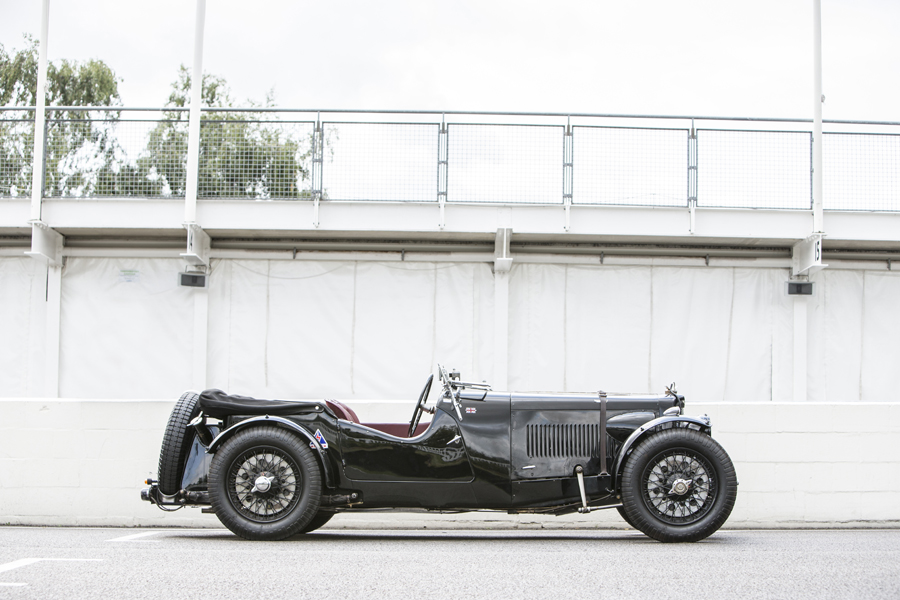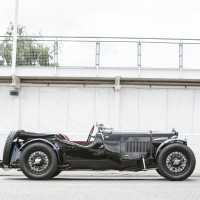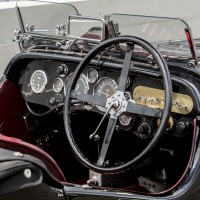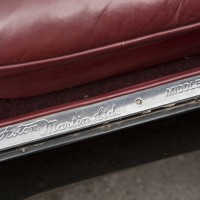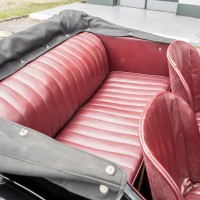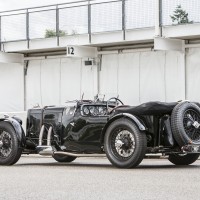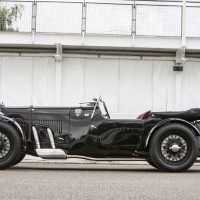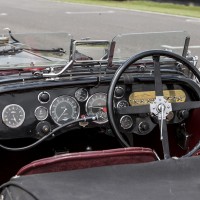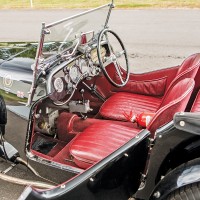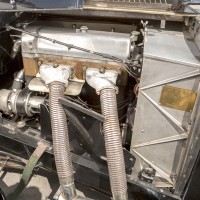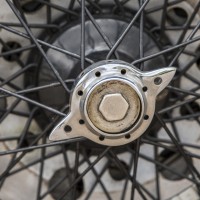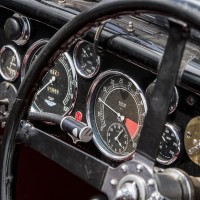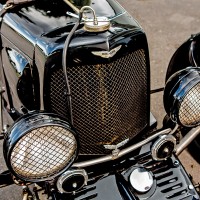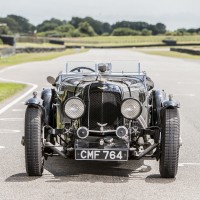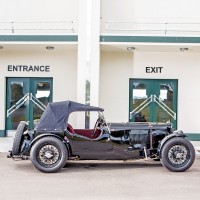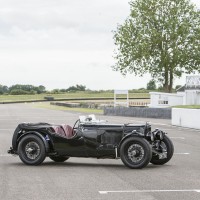SCM Analysis
Detailing
| Vehicle: | 1935 Aston Martin Ulster 2/4 Seater Tourer |
| Years Produced: | 1934–35 |
| Number Produced: | 31 (of which four were 2/4-seaters) |
| Original List Price: | £750 |
| Distributor Caps: | Originally magneto, now on coil ignition. VW Polo dizzy cap $12 |
| Chassis Number Location: | Front nearside chassis leg, and plate on left side of firewall |
| Engine Number Location: | On ring casting holding water pump and magneto |
| Alternatives: | 1934–35 Riley MPH, 1934–36 MG N-type Magnette, 1934–36 Frazer Nash Shelsley (or 1932-38 TT replica) |
| Investment Grade: | A |
This car, Lot 365, sold for $1,142,377, including buyer’s premium, at Bonhams’ Goodwood Revival sale on September 12, 2015.
The Ulster is a spin-off from the Aston Martin Works team’s success in the 1954 Ards TT, where the story goes that changing of the team cars’ color lifted the jinx that afflicted them, and the three cars — LM15, 16 and 17 — won the team prize.
Later, LM20 finished 3rd overall at Le Mans in 1935, winning its class and the Rudge Cup.
“Win on Sunday, sell on Monday” is a concept as old as racing itself, and, as well as the team cars, 21 replicas were built, although in truth they were little more than warmed-over Mk IIs.
Not a Works car
Bonhams sold one of the 2-seater Works team cars, LM19, at its Goodwood Festival of Speed sale earlier in the year for $4,581,922. That was $1m more than expected, thanks to good provenance and low ownership — if not early racing success or even originality (it was originally red) — but even the reserve price was about twice what was paid here.
What makes that car worth twice to four times as much as this one?
There are two major differences: First, there’s a disparity between 2- and 4-seaters in the same way that convertibles of any kind regularly sell for twice the price of their coupe siblings. For reasons of fashion or simply folly, 2-seater versions of anything are always cooler, sexier and many times more valuable than the 2+2 or four-seater versions of anything (see E-type, 330 GTC, Big Healey, MG Magna and more).
This is mad when you’re riding the same hardware, but that’s market forces for you. In the Ulster’s case, on the 2-seaters the spare wheel lies flat, enclosed by bodywork, which gives them a slightly “pregnant seal” look from behind. On the 2/4s the spare is exposed, mounted vertically at the rear.
The rear body is square-profiled on the 2/4 but the chassis lengths are the same.
The second — and more important — difference is that LM cars are team cars, and U-suffix cars are customer cars, and in the serious collector world, provenance is all. Our car is a customer car.
There were 10 team cars and 21 customer cars. LM19 was a genuine factory racer, albeit with little success in its early years due to mechanical misfortunes.
The Works built three original 2/4 seaters with special-order bodies. Another 2-seater car had a 2/4-seater body fitted after a crash testing at Brooklands. Of the four 2/4s, one has been converted into a 2-seater, one now has a 2-liter engine and another is the famous “Club Ulster” owned by the Aston Martin Owners Club since 1974. True 4-seaters they are not, with tiny rear perches, suitable only for luggage or very occasional passengers.
Sturdy and a bit heavy
Ulsters of any denomination are good long-distance cars. All major working parts are secured to the chassis by castellated nuts and split pins, and as a result they don’t fall apart and have a good survival rate. That build quality makes them heavy for their size, however.
Of the 31 Ulsters built, 28 are still known, with a possible other car in the United States.
Our subject car was a customer car, and after a couple of early successes with its first owner, it succumbed to engine problems, so by late 1935 it was back at the Works to investigate low oil pressure — which seems to have been a recurring theme with Ulsters.
The car was sold on, dismantled, after being advertised with or without a supercharger, in 1936. It raced sporadically until 1977.
In December 1989, D5570U was offered for sale at a U.K. auction, where it was purchased by businessman Eddy Shah, who’d just sold his newspaper empire following five years of battling the print unions, mostly over the introduction of new technology.
Original body frame and panels
Marque specialist Chris Shenton undertook a comprehensive restoration to concours standard, retaining the original body frame and panels. The restoration was completed in 1993 at a cost of £43,000 ($64,229).
In June 1997, Brooks offered the Ulster for sale at its Goodwood auction (Lot 874), where it was purchased by the next owner, but stored until the current owner bought it in 2002. Ecurie Bertelli then readied the car for a period of racing and rallying (its FIA HTP and FIVA papers date from 2005) which included a win in the St. John Horsfall Trophy Race at Silverstone in 2006 plus long-distance rally events such as the Scottish Malts Rally.
After that there was another complete engine rebuild, including a new shell-bearing crankshaft, steel conrods and camshaft, in 2007 (it’s now good for 100 bhp) and the gearbox rebuilt, but it does not appear to have done much since.
The motor is now on coil ignition, using a modern distributor. All the work was done by Ecurie Bertelli, where it was available privately for sale since at least 2013. My notes say: “Good older paint, leather just settling in, nickel-plated exhaust just taking on a bit of color.” The dash ought to be matte black, but most of them are shiny these days.
A deal for the buyer
So, it’s had some wilderness years, but it’s quite original apart from the wings, and the originals are included. There’s race pedigree in living memory, and it’s eligible for all the most important historic motor sports events including Le Mans and the Mille Miglia.
It looks cheap compared with LM19, which sold unexpectedly high, and both are simply down to the vagaries of the auction system at work.
This car was let go some £50k ($77k) under the lower estimate of £700k ($1.08m), because that’s all someone was prepared to pay on the day — in an auction marquee across the road from one of the greatest and busiest historic motorsports gatherings in the world.
It was a customer car and not a team car, the 2/4 body is considered less attractive and desirable than the pure 2-seater, and the price… well, that’s how the dice rolled on the day. With the last Ulster made currently available privately (and wearing a replica 2-seater body, for it was also once a 2/4) asking somewhere north of a million quid ($1.6m), I think the buyer here has got himself a bit of a deal. ♦
(Introductory description courtesy of Bonhams.)
